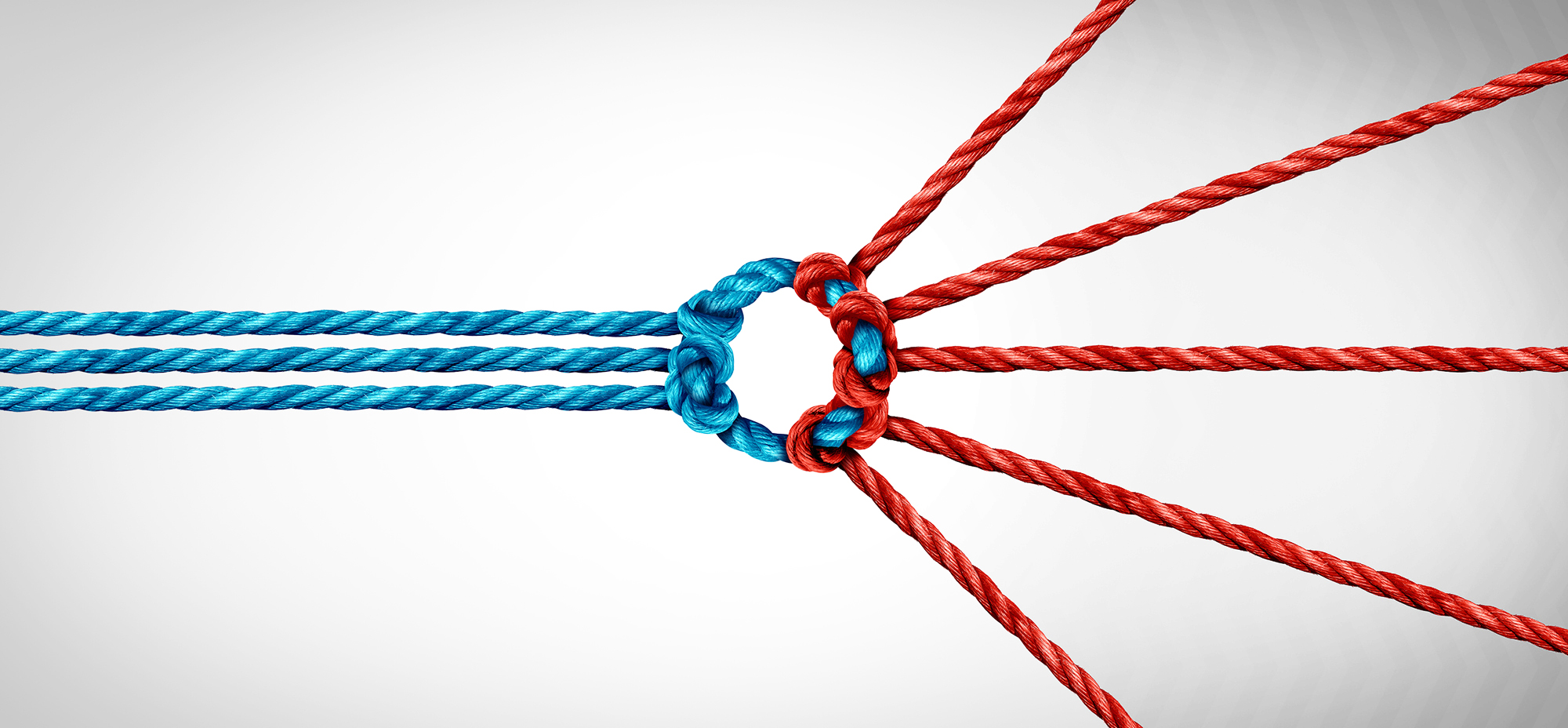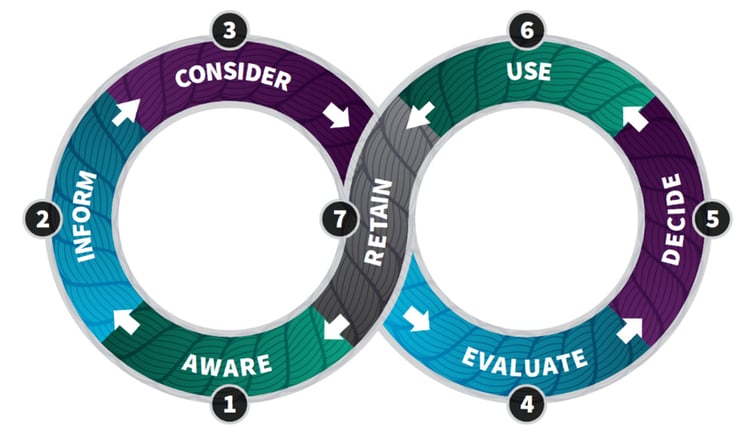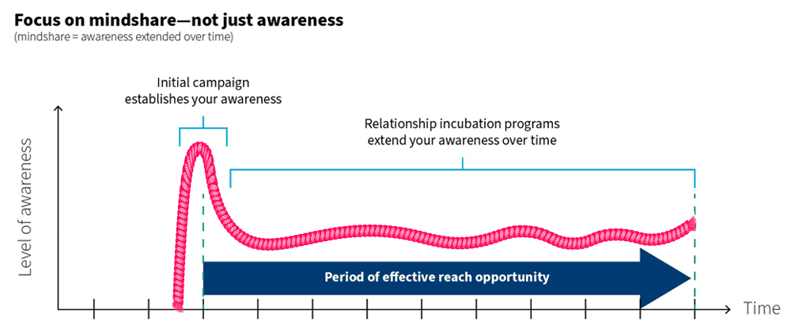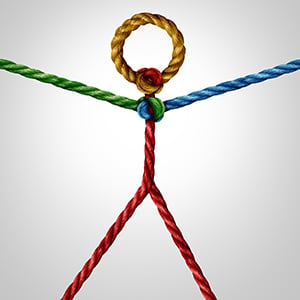Increase your MDF impact by accelerating the customer buying journey
November 3, 2023
By Rod Griffith
December 1, 2023

We’ve previously presented some of the dos and don’ts of MDF program implementation—along with a brief guide on how to best plan your MDF spend initiatives. So, now that you’ve been assigned some MDF (market development funds) and have decided to implement a joint lead-generation campaign in collaboration with your channel and/or alliance partner, what’s next?
Here are some key tips on how to ensure you’ve developed an effective joint marketing campaign optimized for success.
 1. Make your messaging simpler
1. Make your messaging simplerWhen you conduct a joint marketing campaign with a strategic partner, you likely want to showcase complex products based on innovative technology. You also want to explain how these solutions work together to solve key customer challenges.
Too often, however, there’s a tendency to use a barrage of technical jargon and deep-dive explanations.
Can visitors to your website understand who you are, what you do, and for whom you do it—all within the first eight seconds of visiting your website or campaign landing page? (If not, you run the risk they’ll bounce before understanding your basic value proposition.)
Explain your complex products and technologies using simple ideas and analogies.
 2. Know your true competition
2. Know your true competitionMost B2B technology marketers think their biggest competitors are other companies that sell comparable products. But that is often wrong.
The fact is, you’re more likely to lose business when your customer decides to:
Make sure your joint sales campaign has been designed to compete not only with your direct competitors but also with the customer’s tendency to stick with the status quo or address their challenges in-house. Proactively address customers who think, “It’s a good product, but it’s not something we need this year.” Or similarly, “What we currently use is good enough for now.”
Design your campaign messaging to address these likely objections up front. Don’t assume you or your salesperson will get to address those objections later. You may never reach that stage.
Before you develop your joint sales campaign plan, assess the stages of the customer buying journey. Identify where your customer journey is most slowed or thwarted—and focus your effort on initiatives that will best help to accelerate those stages of your customer buying journey.
Here’s the total customer buying journey path:

Everything that marketers do should directly or indirectly focuses on accelerating customers through this journey. But not every stage needs the same attention.
For example, if your biggest challenge is converting leads from the Consider stage (where they are seriously considering which vendors to buy from) to the Evaluate stage (where they are evaluating your product against others), sales tools and campaigns that generate awareness won’t help much because they are designed for the Aware stage.
Take time to evaluate the full customer buying journey, and determine where your sales opportunities are most slowed or blocked. This will help you refocus your energy and resources on marketing initiatives that more directly impact the acceleration of the buying journey.
 4. Seek customer mindshare—not just awareness
4. Seek customer mindshare—not just awarenessAs a B2B company, you don’t have the luxury of short sales cycles. The time between when a prospective customer first becomes aware of your product and when they actually purchase your product can be many weeks, many months—or even a few years.
Most B2B lead-generation campaigns are developed to create awareness, communicate critical sales messaging, and then entice a response via your call to action designed to result in a follow-up sales conversation (“Request a demo,” “Talk to our expert,” “Let us tell you more”).
They hope they will reach a qualified prospect actively seeking a solution and ready to engage. But by launching campaigns that rely on the luck of good timing, we consider ourselves fortunate if we garner a 3% response or click-through rate. The 97% who don’t respond are defined as “not interested.”
But there are numerous solid prospects in that pool of nonrespondents who are simply not ready to engage in a sales discussion. If you tag them as disqualified/uninterested, you lose a significant opportunity a year or two down the road.
This is where mindshare campaigns come in. Mindshare is awareness extended over time. Mindshare campaigns generate awareness—and then maintain that awareness over an extended period through a well-designed, carefully synchronized series of outbound marketing initiatives that entice customers to establish an opt-in relationship so you can communicate with them regularly.

Consider using your MDF to develop mindshare-focused campaigns designed to establish an ongoing relationship. This can include e-newsletters, blogs, tutorials/videos, and other free resources and engagement tools. In doing so, you will lessen your dependence on luck.
Many people think that individual consumers regularly base purchase decisions on emotions, whim, and personal desire, while savvy business decision makers base their procurement on research, analysis, data, ROI calculations, and strategic business goals. Personal needs and emotions, those people believe, don’t typically play a significant role in B2B purchase decisions—especially for significant investments.
However, researchers are proving this notion of the impersonal business buyer to be a myth. A study conducted by the CEB Marketing Leadership Council, in conjunction with Google, found that a product’s perceived personal value had almost twice as much impact on the purchase outcome as the perceived business value. The personal value perceived by the decision maker includes professional, social, emotional, or self-image benefits.
 To identify the right personal value messages for your products or solutions, start by talking with your customers—something B2B marketers don’t do often enough. Use the following questions to structure the conversation and help identify the personal value your customers believe your products or solutions provide.
To identify the right personal value messages for your products or solutions, start by talking with your customers—something B2B marketers don’t do often enough. Use the following questions to structure the conversation and help identify the personal value your customers believe your products or solutions provide.
Once you’ve defined the personal value messages for your product or solution, the next step is to infuse your messaging—whether value propositions, elevator pitches, or sales stories—with personal value and emotion. This will enhance your appeal and both strengthen and differentiate your overall messaging.
These are five solid recommendations to help you plan a successful MDF partner marketing campaign initiative. But if you’re short on resources or just want some expertise and assistance in creating and implementing your MDF marketing, you won’t find a better partner than MarketReach.
We have almost thirty years of experience designing, planning, and implementing partner marketing programs, campaigns, and sales tools for a wide array of B2B technology companies (including information technology, healthcare technology, and industrial technology).
Contact us today for a free consultation.
We take pride in a team loaded with smarts, wit, and ideas. If you'd like to have a smarter, wittier inbox filled with ideas each month, subscribe here to the MarketReach Blog, and we will let you know when there is something new you might like!

Need us now? Just want to learn more? We’d love to talk.